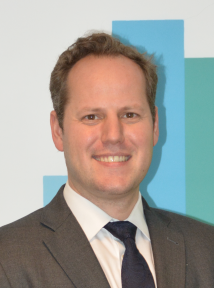For the third year in a row, the multi-country stock exchange Euronext registered four biotech IPOs last year. Continuity or stagnation? Sebastian Grabert, director and representative of Euronext in Germany, explains his point of view.
Plattform Life Sciences: Mr Grabert, let’s look back at the 2018 IPO year. Once again, four biotech companies made it onto Euronext. What do you conclude from this?
Grabert: Overall, I am very pleased. Following 2016 and 2017, we again saw four biotech IPOs to Euronext last year. That is a sign of continuity. And we managed it despite the fact that the fourth quarter market conditions in particular were very bad. Numerous planned IPOs were cancelled worldwide. On the other hand, there was also very brisk M&A activity: Tigenix, Ablynx and TxCell, three biotech companies that were listed on Euronext, were acquired by pharmaceutical groups in 2018. This proves that companies are still attractive to strategic investors even after an IPO.
Four biotech IPOs again in one year; that does speak for continuity, but perhaps also for stagnation?
One must look at this continuous number of IPOs in relative terms. After all, four IPOs are better than no biotech IPOs at all, as was the case on the German stock exchange. Besides, Euronext has a very stable number of 52 biotech and 38 medtech companies listed. This also means that for IPOs of a certain size, Euronext is most worth considering. And this is not only true for companies in countries that are part of the cross-border exchange (France, Belgium, the Netherlands, Ireland and Portugal); since 2018, for instance, British Acacia Pharma has chosen to list on Euronext.
What is your assessment of the current market environment for Life Science IPOs?
I don’t think sheer optimism is appropriate at the moment. A hard Brexit is still very likely. Also, the disastrous situation in Italy and its potential consequences for the eurozone have been seriously underestimated, in my view. Further macroeconomic factors also come into play. And still, Euronext was listed the first Life Science IPO in 2019, Sequana Medical. This means that there are still good opportunities for a successful IPO further on if there’s a good equity story.
In September 2018, Euronext started its TechShare programme. What is your initial conclusion?
With our TechShare programme, we want to get technology-oriented companies, including those in Life Sciences, interested in the topic of IPOs. I can already say today that a number of companies are seriously considering an IPO and are engaged in discussions with investment banks – although of course I can’t mention any details. In general, we are extremely pleased with the development of the programme. There was a huge turnout for our evening sessions in Berlin and Munich. We reach companies that have never before considered the topic of IPOs. An IPO now presents itself to them as an attractive alternative to the classic rounds of financing with venture capital providers, though we still note some uncertainty, especially with newer companies. We can and will pursue further action with them. What we offer with the TechShare programme is unique. Just recently, we brought together more than 100 companies from all over Europe at a “campus event” in Lisbon. They were able to discuss financing alternatives with each other and with banks, auditors and capital market lawyers. A transnational network of and for European tech companies is emerging.
Many biotech companies would rather venture an IPO on Nasdaq instead. How does Euronext score in comparison?
Ultimately, every stock exchange has its advantages and disadvantages. An IPO on Nasdaq is a huge undertaking, so you need to be a certain size. You have to be present on-site, which usually requires a major financial and organisational expenditure. For these reasons, it’s only an alternative for a few biotechs. What’s even more decisive is that Frankfurt am Main only plays a marginal role as a stock exchange for biotech IPOs. The ecosystem is missing – there are too few specialised investors, and the risk is often too unpredictable for the generalists. As a result, there are too few banks and analysts that specialise in biotech. It’s no coincidence that so many Life Science companies are listed on Euronext. With this in mind, we are expanding our local representation to draw German companies’ attention to this alternative exchange.
Over the past year, twelve biotech companies that are listed on Euronext entered into research collaborations with pharmaceutical groups. Is “Big Pharma” paying close attention to Euronext?
That is certainly the case, and we’re happy about the positive news flow. Of course the big pharma companies profit from the obligatory transparency of listed companies, for instance with regard to accounting. That is an ideal prerequisite for cooperation.
Can you give us your outlook for the future?
The topic of IPOs is and will remain an interesting option for financing company growth, particularly for those in Life Sciences. And now companies in Germany also have this option on their radar, which has not always been the case. We are having an increasing number of discussions with interested companies and the correspondingly specialised investment banks, though I can’t yet make any predictions. Not least because of the stock market environment, right now I would tend to lower expectations, though in the medium term we will certainly see a number of exciting IPOs.
Mr Grabert, thank for you the interesting discussion.
The interview was conducted by Holger Garbs.
Autor/Autorin
Holger Garbs ist seit 2008 als Redakteur für die GoingPublic Media AG tätig. Er schreibt für die Plattform Life Sciences und die Unternehmeredition.



